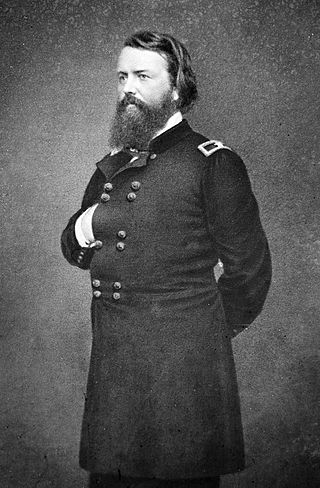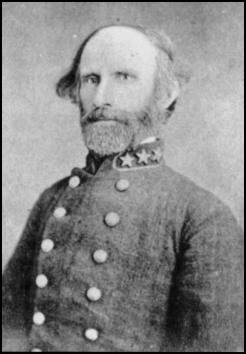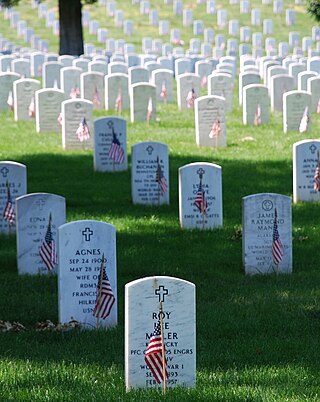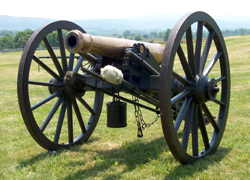This article includes a list of general references, but it lacks sufficient corresponding inline citations .(November 2011) |
Keith Rocco is a military and historical painter working in the United States.
This article includes a list of general references, but it lacks sufficient corresponding inline citations .(November 2011) |
Keith Rocco is a military and historical painter working in the United States.
His interest in military subjects developed at an early age. One of his first books, received as a Christmas present when he was ten, was The Golden Book of the Civil War, and he began collecting Civil War and Napoleonic artifacts when he was 14. Today, his collection includes original uniforms and artifacts as well as modern replicas which he uses as props for his paintings. His home and studio are in the Shenandoah Valley of Virginia.
Keith Rocco is known for his illustrative paintings of the American Civil War. [1] Individual soldier studies figure prominently in Rocco’s oeuvre. He has also been commissioned for mural work including three large murals for the Wisconsin Veterans Museum in Madison, Wisconsin. Another commission was for the Pamplin Historical Park and was on a massive scale: over 4,000 square feet (370 m2). In 2003, he designed the centerpiece mural “Gettysburg”, for the Abraham Lincoln Presidential Library and Museum in Springfield, Illinois. University of Illinois Press, University of Georgia Press, Chapel Hill, Military History, American History Illustrated, Napoleon Journal, Soldats Napoleonien, Le Livre Chez Vous and other publishing houses have all featured his work on their covers and dust jackets. His works are also in the collections of the National Park Service, the United States Army, the Andrew Mellon Foundation, the Pentagon, the Atlanta Historical Society, the United States House of Representatives, Gettysburg National Park, the City of Fredericksburg, Virginia, the National Guard Heritage Collection, and the U.S. Army War College.

The Gettysburg Address is a speech that U.S. President Abraham Lincoln delivered during the American Civil War at the dedication of the Soldiers' National Cemetery, now known as Gettysburg National Cemetery, in Gettysburg, Pennsylvania on the afternoon of November 19, 1863, four and a half months after the Union armies defeated Confederate forces in the Battle of Gettysburg, the Civil War's deadliest battle. The speech is widely considered one of the most notable and famous delivered in American history.

John Pope was a career United States Army officer and Union general in the American Civil War. He had a brief stint in the Western Theater, but he is best known for his defeat at the Second Battle of Bull Run in the East.

The Second Battle of Corinth was fought October 3–4, 1862, in Corinth, Mississippi. For the second time in the Iuka–Corinth Campaign, Union Maj. Gen. William Rosecrans defeated a Confederate army, this time one under Maj. Gen. Earl Van Dorn.

The Battle of Ringgold Gap was fought November 27, 1863, outside the town of Ringgold, Georgia, by the Confederate and Union armies during the American Civil War. Part of the Chattanooga Campaign, it followed a heavy Confederate loss at the Battle of Missionary Ridge from which General Braxton Bragg's artillery and wagon trains were forced to retreat south. The five hour Battle of Ringgold Gap resulted in the Confederate victory of Major General Patrick R. Cleburne and gave the Army of Tennessee safe passage to retreat through the Ringgold Gap mountain pass.

John Mansfield was an American lawyer and Republican politician. He was the 15th lieutenant governor of California. During the American Civil War, he was a Union Army officer serving in the 2nd Wisconsin Infantry Regiment in the famous Iron Brigade of the Army of the Potomac. He took command of the regiment during the first day of the Battle of Gettysburg and remained in command until the regiment was disbanded in the fall of 1864. After the war, he received an honorary brevet to brigadier general.

During the American Civil War, the Commonwealth of Pennsylvania played a critical role in the Union, providing a substantial supply of military personnel, equipment, and leadership to the Federal government. The state raised over 360,000 soldiers for the Federal armies. It served as a significant source of artillery guns, small arms, ammunition, armor for the new revolutionary style of ironclad types of gunboats for the rapidly expanding United States Navy, and food supplies. The Phoenixville Iron Company by itself produced well over 1,000 cannons, and the Frankford Arsenal was a major supply depot.
The bibliography of the American Civil War comprises books that deal in large part with the American Civil War. There are over 60,000 books on the war, with more appearing each month. Authors James Lincoln Collier and Christopher Collier stated in 2012, "No event in American history has been so thoroughly studied, not merely by historians, but by tens of thousands of other Americans who have made the war their hobby. Perhaps a hundred thousand books have been published about the Civil War."

Richard Woodhouse Johnson was an officer in the Union Army during the American Civil War.

Alexander Welch Reynolds was a career United States Army officer who served in the Mexican-American War and a Confederate Army brigadier general during the American Civil War, primarily fighting in the Western Theater. After the conflict he served as a staff officer in the Egyptian Army.
Don Troiani is an American painter whose work focuses on his native country's military heritage, mostly from the American Revolution, War of 1812 and American Civil War. His highly realistic and historically accurate oil and watercolor works are most well known in the form of marketed mass-produced printed limited-edition reproductions, illustrated books, book compilations, museum and government collections. He is also a militaria collector.

During the American Civil War, the state of Illinois was a major source of troops for the Union Army, and of military supplies, food, and clothing. Situated near major rivers and railroads, Illinois became a major jumping off place early in the war for Ulysses S. Grant's efforts to seize control of the Mississippi and Tennessee rivers. Statewide, public support for the Union was high despite Copperhead sentiment.

The commemoration of the American Civil War is based on the memories of the Civil War that Americans have shaped according to their political, social and cultural circumstances and needs, starting with the Gettysburg Address and the dedication of the Gettysburg cemetery in 1863. Confederates, both veterans and women, were especially active in forging the myth of the Lost Cause of the Confederacy.
Jay Luvaas was an American military historian who was an expert on the American Civil War and the history of military theory. He was the first civilian to hold a visiting professorship of military history at West Point, and was a professor of military history at the United States Army War College in Carlisle, Pennsylvania. He was the founder of the modern military staff ride, and was a two-time recipient of the Outstanding Civilian Service Medal of the Department of the Army.

The 7th Texas Infantry Regiment was a unit of Confederate States Army infantry volunteers organized in 1861 that fought mostly in the Army of Tennessee during the American Civil War. The regiment was captured at Fort Donelson in 1862 and sent to Northern prison camps. After the survivors were exchanged and new recruits added, the regiment was reconstituted and fought at Raymond, Jackson, Chickamauga, Missionary Ridge, and Ringgold Gap in 1863. The unit served in the Atlanta Campaign and at Franklin, Nashville, Averasborough, and Bentonville in 1864–1865. The regiment's 65 survivors surrendered to William Tecumseh Sherman's Federal forces on 26 April 1865.

The 20-pounder Parrott rifle, Model 1861 was a cast iron muzzle-loading rifled cannon that was adopted by the United States Army in 1861 and employed in field artillery units during the American Civil War. As with other Parrott rifles, the gun breech was reinforced by a distinctive wrought iron reinforcing band. The gun fired a 20 lb (9.1 kg) projectile to a distance of 1,900 yd (1,737 m) at an elevation of 5°. The 20-pounder Parrott rifle could fire shell, shrapnel shell, canister shot, and more rarely solid shot. In spite of the reinforcing band, the 20-pounder earned a dubious reputation for bursting without warning, killing or injuring gunners. The Confederate States of America also manufactured copies of the gun.

Douglas's Texas Battery was an artillery battery that served in the Confederate States Army during the American Civil War. In June 1861, the unit was formed by combining one group of men from Dallas with a second group from Tyler and placing them under the command of John Jay Good. The battery fought at Pea Ridge in March 1862 and soon afterward transferred to the east side of the Mississippi River. James Postell Douglas replaced Good as commander and led the battery at Richmond, Stones River, Chickamauga, Chattanooga, the Atlanta Campaign, Franklin, and Nashville. After operations around Mobile, Alabama, Confederate units in the region surrendered and the survivors of the battery were paroled on 12 May 1865. It was the only Texas field artillery unit that served east of the Mississippi.

Bridges' Battery Illinois Light Artillery was an artillery battery from Illinois that served in the Union Army during the American Civil War. Organized on 17 June 1861 as Company G, 19th Illinois Infantry Regiment, it was detached as an independent artillery battery on 14 January 1863. The battery fought in the Tullahoma campaign, at the battles of Chickamauga and Missionary Ridge, and in the Knoxville campaign in 1863. Bridges' Battery participated in the Atlanta campaign in 1864, fighting at Rocky Face Ridge, Resaca, Adairsville, Pickett's Mill, Kennesaw Mountain, Peachtree Creek, Atlanta, and Jonesboro. The unit fought at Franklin and Nashville shortly before it was renamed Battery B, 1st Illinois Light Artillery Regiment on 21 December 1864. It spent the rest of the war with the Nashville garrison and was mustered out in July 1865.

Chattanooga, Tennessee, was a major rail center and a strategic vantage-point during the American Civil War, with high ground competed-for by both sides. When Union forces were besieged in the town, General Ulysses S. Grant forced a supply-route, earning him President Abraham Lincoln's gratitude.
The 5th Louisiana Infantry Regiment was a unit of volunteers recruited in Louisiana that fought in the Confederate States Army during the American Civil War. Formed in June 1861, the regiment was sent to fight in the Eastern Theater of the American Civil War. The regiment served at Yorktown, White Oak Swamp, Cedar Mountain, Second Bull Run, Harpers Ferry, Antietam, and Fredericksburg in 1862. The regiment fought at Chancellorsville, Second Winchester, and Gettysburg in 1863. At Rappahannock Station in November 1863, virtually the whole regiment was captured. The unit's remnant fought at the Wilderness, Spotsylvania, Cold Harbor, and the Valley campaigns of 1864. It served at Petersburg starting in December 1864 and a mere handful surrendered at Appomattox in April 1865.